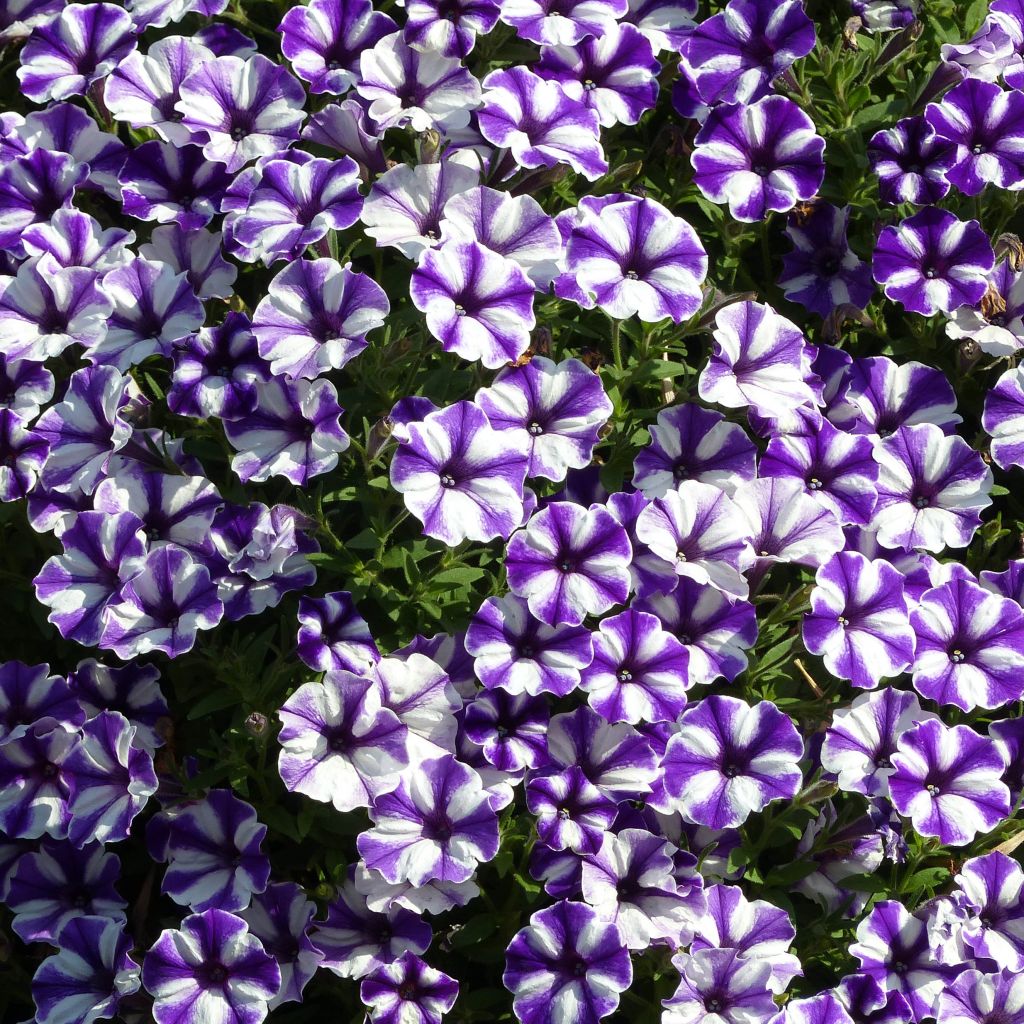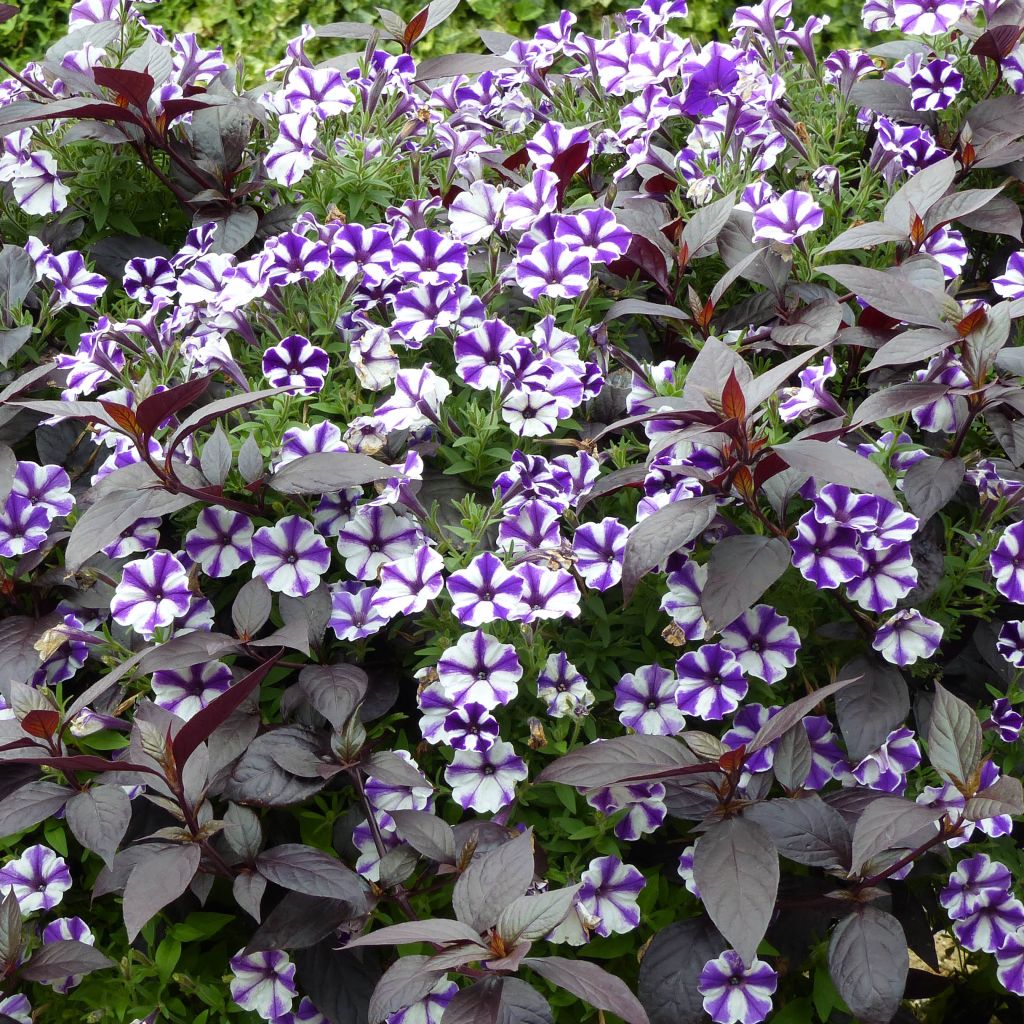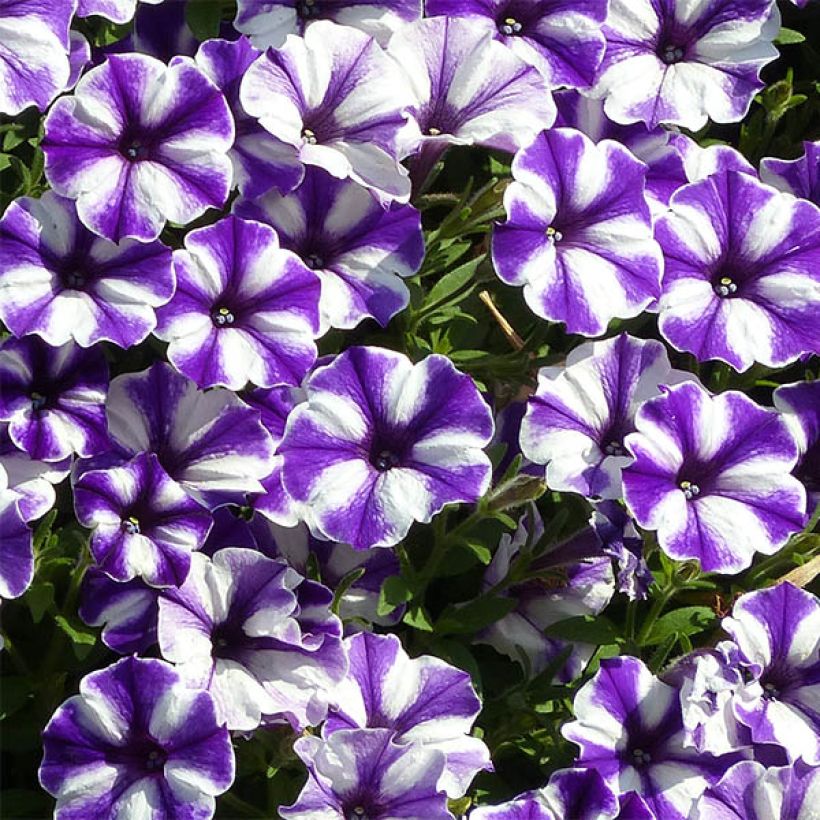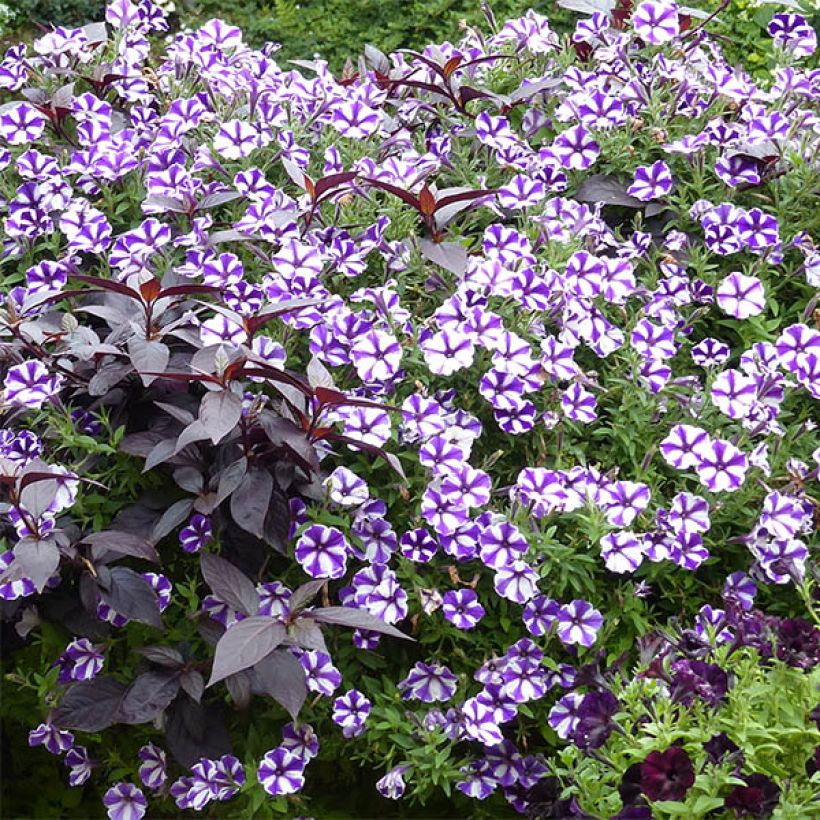Shipping country and language
Your country of residence may be:
Your country of residence is:
For a better user experience on our website, you can select:
Your shipping country:
Andorra
Austria
Belgium
Bulgaria
Canada
Chile
Croatia
Cyprus
Czechia
Denmark
Estonia
Finland
France
Germany
Greece
Hungary
Iceland
Ireland
Italy
Latvia
Lithuania
Luxembourg
Malta
Monaco
Netherlands
Poland
Portugal
Romania
Slovakia
Slovenia
Spain
Sweden
Switzerland
United Kingdom
We only deliver seed and bulb products to your country. If you add other products to your basket, they cannot be shipped.
Language:
French
German
Spanish
English
My Account
Hello
My wish lists
Plantfit
Log in / Register
Existing customer?
New customer?
Create an account to track your orders, access our customer service and, if you wish, make the most of our upcoming offers.


Petunia Blueberry Star - Pétunia hybride bleu-violet et blanc.


Petunia Blueberry Star - Pétunia hybride bleu-violet et blanc.
Petunia Blueberry Star
Petunia x hybrida Bluberry Star
Garden Petunia, Common Petunia
Generally correct
Morgane P., 25/06/2019
Order in the next for dispatch today!
Dispatch by letter from €3.90.
Delivery charge from €5.90 Oversize package delivery charge from €6.90.
More information
This item is not available in your country.
Schedule delivery date,
and select date in basket
This plant carries a 6 months recovery warranty
More information
We guarantee the quality of our plants for a full growing cycle, and will replace at our expense any plant that fails to recover under normal climatic and planting conditions.
From €5.90 for pickup delivery and €6.90 for home delivery
Express home delivery from €8.90.
Does this plant fit my garden?
Set up your Plantfit profile →
Description
Petunia 'Blueberry Star' produces upright and compact clumps, fully covered with single, medium-sized flowers on which the pattern of a blue-violet star stands out against a white background. These vigorous plants flower continuously until October. This annual brings dynamism to flower beds, flower pots and hanging baskets. To be grown in sunny, fertile, light and moist soil.
Hybrid petunias all come from several plants originating from the warm regions of South America. Petunia 'Blueberry Star' belongs to the solanaceae family, it is similar to ornamental tobacco and its foliage also contains alkaloids. This variety quickly forms a round and dense clump of 30 to 40 cm (12 to 16in) high and 30 to 50 cm (12 to 20in) in diameter, with a very solid appearance. The plant will bloom from May to October, provided it is well-watered and regularly fed. Its cup-shaped, medium-sized flowers are very vibrant, blue-violet and white, tightly packed together on dense foliage. The small centre of the corolla is marked with dark violet. The hairy, dark green leaves have entire edges. The foliage is vigorous and healthy.
No other annual flowering plant has received such intense selection from breeders for such a long period. The results are impressive and petunias compete with geraniums for the splendour and length of their flowering, as demonstrated by this 'Blueberry Star' variety. Plant it in large pots or hanging baskets, creating a perfect contrast with black-flowered petunias. You can also plant it in flower beds, to edge borders of plants with grey foliage such as cerastiums, sea cinerarias or artemisias. If you want it to stand out, plant several plants to create an original ground cover at the base of plants with grey foliage such as faasseni catmints or annual poppies in pastel colours.
Note: Please be aware that our plug plants are products intended for experienced gardeners: upon receipt, transplant and store them under shelter (veranda, greenhouse, cold frame...) at a temperature above 14°C (57.2°F) for a few weeks before being planted outdoors once all risk of frost has passed.
Petunia Blueberry Star in pictures




Flowering
Foliage
Plant habit
Botanical data
Petunia
x hybrida
Bluberry Star
Solanaceae
Garden Petunia, Common Petunia
Cultivar or hybrid
Planting and care
You can plant your Petunias in the ground or in a pot. If you want to plant them in the ground, wait until the last heavy frosts have passed, they will tolerate a little late frost. In the meantime, you can grow them on in a pot in a warm and bright place to accelerate their growth. Petunias will flower from June to October. Plant them in a sunny or partially shaded location sheltered from the wind. They need light and humus-rich, well-drained soil. Do not water them too much at the beginning of growth as they are sensitive to excess moisture. They tolerate drought well but will need regular watering during hot summer weather. They are floriferous with rapid growth, and hungry. We recommend feeding them with liquid fertiliser once or twice a week during the growth period. Remove faded flowers and dry leaves as they appear, to keep them looking beautiful and extend the flowering period.
Planting period
Intended location
Care
- , onOrder confirmed
Reply from on Promesse de fleurs
Haven't found what you were looking for?
Hardiness is the lowest winter temperature a plant can endure without suffering serious damage or even dying. However, hardiness is affected by location (a sheltered area, such as a patio), protection (winter cover) and soil type (hardiness is improved by well-drained soil).

Photo Sharing Terms & Conditions
In order to encourage gardeners to interact and share their experiences, Promesse de fleurs offers various media enabling content to be uploaded onto its Site - in particular via the ‘Photo sharing’ module.
The User agrees to refrain from:
- Posting any content that is illegal, prejudicial, insulting, racist, inciteful to hatred, revisionist, contrary to public decency, that infringes on privacy or on the privacy rights of third parties, in particular the publicity rights of persons and goods, intellectual property rights, or the right to privacy.
- Submitting content on behalf of a third party;
- Impersonate the identity of a third party and/or publish any personal information about a third party;
In general, the User undertakes to refrain from any unethical behaviour.
All Content (in particular text, comments, files, images, photos, videos, creative works, etc.), which may be subject to property or intellectual property rights, image or other private rights, shall remain the property of the User, subject to the limited rights granted by the terms of the licence granted by Promesse de fleurs as stated below. Users are at liberty to publish or not to publish such Content on the Site, notably via the ‘Photo Sharing’ facility, and accept that this Content shall be made public and freely accessible, notably on the Internet.
Users further acknowledge, undertake to have ,and guarantee that they hold all necessary rights and permissions to publish such material on the Site, in particular with regard to the legislation in force pertaining to any privacy, property, intellectual property, image, or contractual rights, or rights of any other nature. By publishing such Content on the Site, Users acknowledge accepting full liability as publishers of the Content within the meaning of the law, and grant Promesse de fleurs, free of charge, an inclusive, worldwide licence for the said Content for the entire duration of its publication, including all reproduction, representation, up/downloading, displaying, performing, transmission, and storage rights.
Users also grant permission for their name to be linked to the Content and accept that this link may not always be made available.
By engaging in posting material, Users consent to their Content becoming automatically accessible on the Internet, in particular on other sites and/or blogs and/or web pages of the Promesse de fleurs site, including in particular social pages and the Promesse de fleurs catalogue.
Users may secure the removal of entrusted content free of charge by issuing a simple request via our contact form.
The flowering period indicated on our website applies to countries and regions located in USDA zone 8 (France, the United Kingdom, Ireland, the Netherlands, etc.)
It will vary according to where you live:
- In zones 9 to 10 (Italy, Spain, Greece, etc.), flowering will occur about 2 to 4 weeks earlier.
- In zones 6 to 7 (Germany, Poland, Slovenia, and lower mountainous regions), flowering will be delayed by 2 to 3 weeks.
- In zone 5 (Central Europe, Scandinavia), blooming will be delayed by 3 to 5 weeks.
In temperate climates, pruning of spring-flowering shrubs (forsythia, spireas, etc.) should be done just after flowering.
Pruning of summer-flowering shrubs (Indian Lilac, Perovskia, etc.) can be done in winter or spring.
In cold regions as well as with frost-sensitive plants, avoid pruning too early when severe frosts may still occur.
The planting period indicated on our website applies to countries and regions located in USDA zone 8 (France, United Kingdom, Ireland, Netherlands).
It will vary according to where you live:
- In Mediterranean zones (Marseille, Madrid, Milan, etc.), autumn and winter are the best planting periods.
- In continental zones (Strasbourg, Munich, Vienna, etc.), delay planting by 2 to 3 weeks in spring and bring it forward by 2 to 4 weeks in autumn.
- In mountainous regions (the Alps, Pyrenees, Carpathians, etc.), it is best to plant in late spring (May-June) or late summer (August-September).
The harvesting period indicated on our website applies to countries and regions in USDA zone 8 (France, England, Ireland, the Netherlands).
In colder areas (Scandinavia, Poland, Austria...) fruit and vegetable harvests are likely to be delayed by 3-4 weeks.
In warmer areas (Italy, Spain, Greece, etc.), harvesting will probably take place earlier, depending on weather conditions.
The sowing periods indicated on our website apply to countries and regions within USDA Zone 8 (France, UK, Ireland, Netherlands).
In colder areas (Scandinavia, Poland, Austria...), delay any outdoor sowing by 3-4 weeks, or sow under glass.
In warmer climes (Italy, Spain, Greece, etc.), bring outdoor sowing forward by a few weeks.
